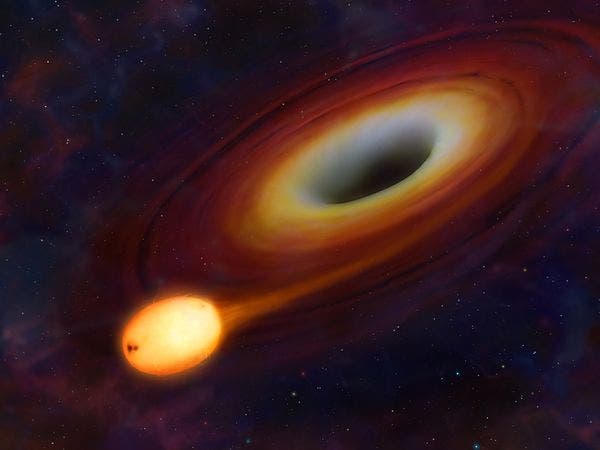
We previously reported about an incredible gamma ray burst triggered by a black hole, so powerful that nothing like this was observed before, or even dimmed possible. A recently published paper in the journal Science sheds more light on the subject.
A typical gamma ray burst commonly occurs when massive stars explode due to collisions with other stars or simple from dying stars – these blasts of radiation usually last around 30 seconds, maybe a few minutes. This super Gamma Ray blast, first observed on 28th of March by the Swift telescope, went on it for days with high levels of radiation, and to this day it still hasn’t stop emitting. Actually, during its first couple of days of activity, the burst registered some wavelengths not visible to the naked eye as bright as a hundred billion suns, scientists report.
“This is probably the first time mankind has seen a phenomenon like this,” says astronomer Josh Bloom of the University of California- Berkeley, lead author of one of two studies on the outburst.
The study brings yet more evidence backing up the theory which say that the center of most big galaxies there’s a supermassive black hole, most of the time quite and dormant.
Swift and other satellites narrowed the origin of the March blast to the center of a galaxy about 22.4 billion trillion miles away or 3.8 billion light-years away, where a titanic black whole, weighing as much as 10 million times more than the sun, gobbled up a star and consumed its whole energy.
In addition, common gamma ray bursts are normally observed at the margin of a galaxy. Sw 1644+57, as the burst was dubbed, however was found in an unusual location – at the core of a galaxy.
“That’s the prime reason we started suspecting early on that a supermassive black hole was involved, because we know [galactic cores are] where these beasts reside.”
What’s remarkable is the game of chance which lead to the observation of this stunning phenomena. As the star was ripped apart by the black hole’s gravity, it was actually trained into a loop around the hole with the speed of light which caused a beam of radiation to spill out of latter’s center core. It took almost 4 billion years and precisely the perfect kind of geometry for the beam to hit Earth and astrophysicists to observe it.
“Seeing a star get ripped apart by a black hole from almost 4 billion light-years away, that’s a remarkable thing,” says astronomer Dave Goldberg, co-author of A User’s Guide to the Universe: Surviving the Perils of Black Holes, Time Paradoxes, and Quantum Uncertainty, who was not part of the studies. “We want to study black holes because they are tremendous natural laboratories for what happens to matter at very high energies.”
Dormant supermassive black holes are still a mystery for scientists, who still can’t unravel its spontaneous nature.
“What’s amazing,” Bloom said, “is that we have here an otherwise quiescent, starving black hole that has decided to go on a sudden feeding frenzy for a short period of time.”
Our galaxy, the Milky Way, seems to have a dormant supermassive black hole at its center as well, and if a Gamma Ray like the one presented earlier were to happen and point towards Earth, it would’ve wreak havoc. Chances something like this would ever happen, scientists assure, are astronomical.






